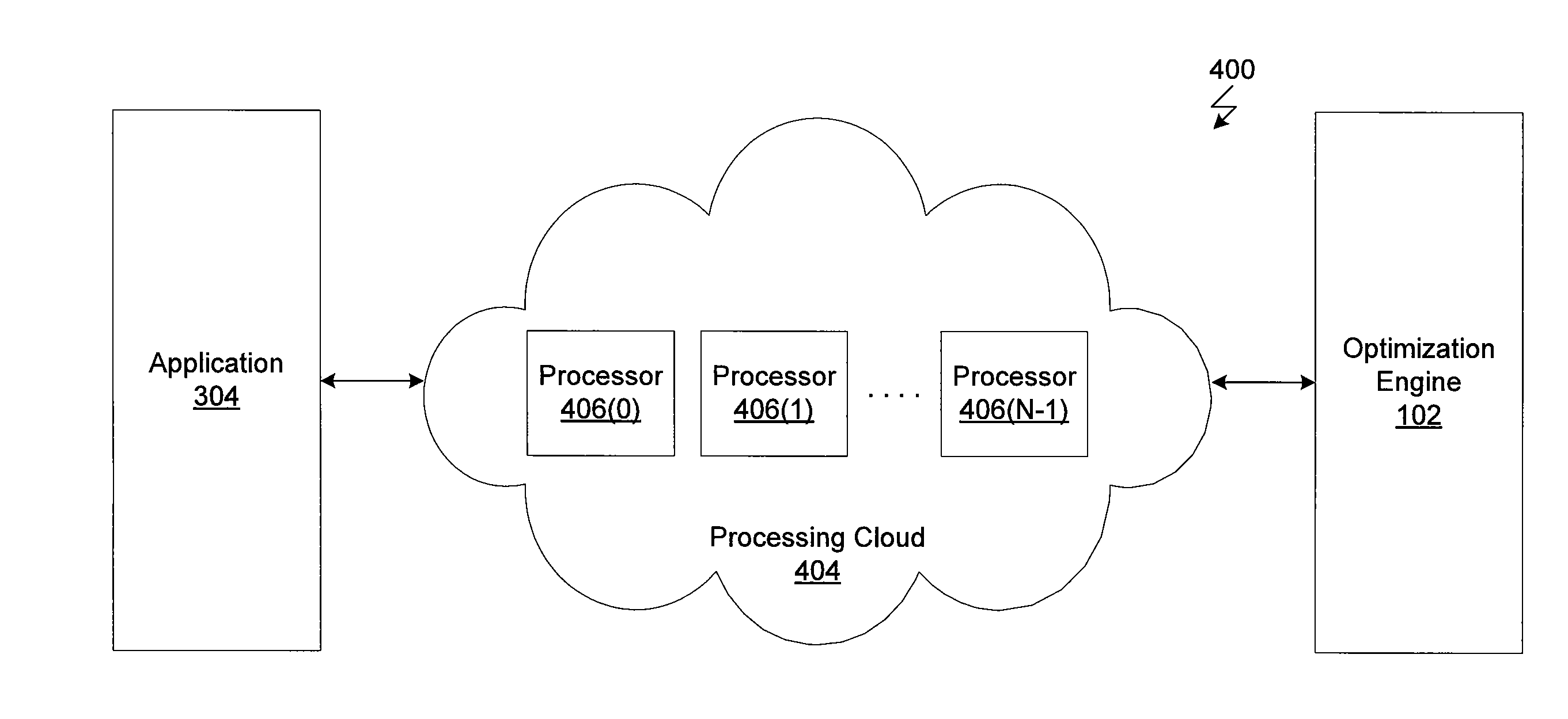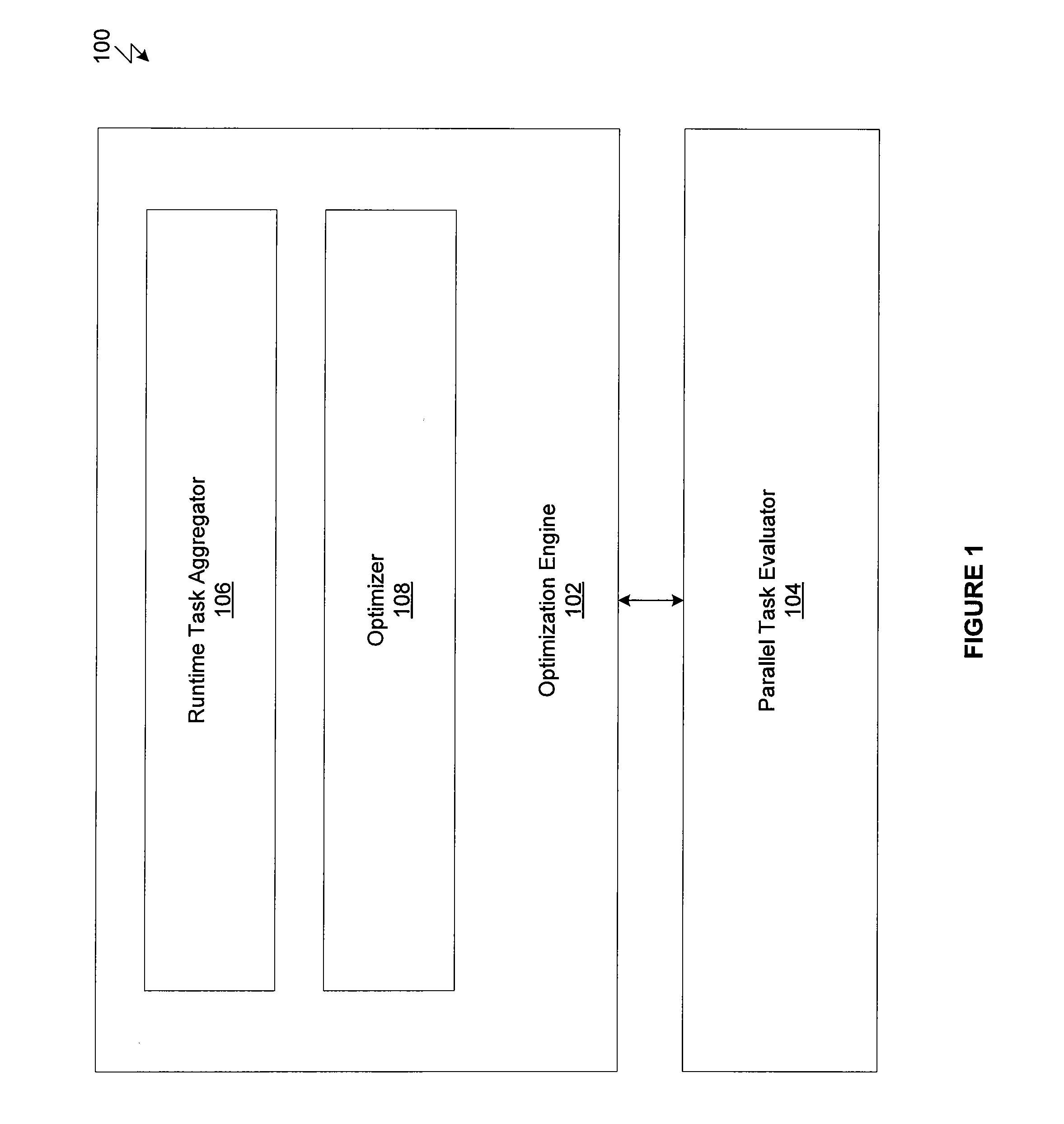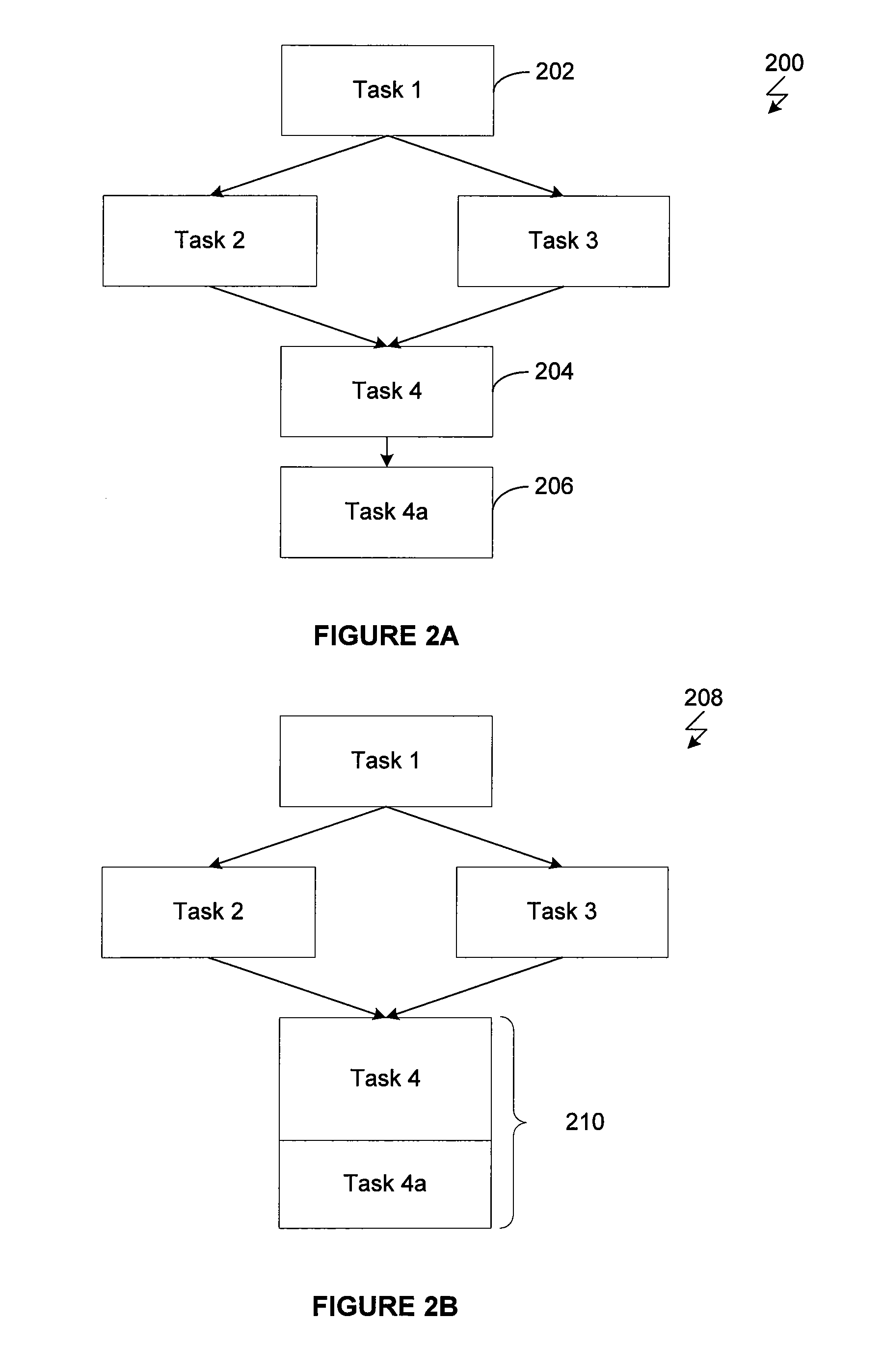System and Method for Optimizing the Evaluation of Task Dependency Graphs
a task dependency and graph technology, applied in the field of parallel processing, can solve the problems of unnecessarily slowing down the processing of work, increasing the processing burden on the processing engine, and large overhead on the parallel computation environment, and achieve the effect of increasing the processing efficiency of a set of tasks
- Summary
- Abstract
- Description
- Claims
- Application Information
AI Technical Summary
Benefits of technology
Problems solved by technology
Method used
Image
Examples
Embodiment Construction
[0018]In the following description, numerous specific details are set forth to provide a more thorough understanding of the present invention. However, it will be apparent to one of skill in the art that the present invention may be practiced without one or more of these specific details. In other instances, well-known features have not been described in order to avoid obscuring the present invention.
[0019]FIG. 1 is a block diagram illustrating a task graph optimization system 100 configured to implement one or more aspects of the present invention. As shown, the task graph optimization system 100 includes an optimization engine 102 and a parallel task evaluator 104.
[0020]The optimization engine 102 performs optimization operations at runtime on a task graph that specifies multiple tasks. The optimization operations are based on characteristics and configurations associated with the multi-processor execution environment within which the task graph is to be evaluated. To optimize a t...
PUM
 Login to View More
Login to View More Abstract
Description
Claims
Application Information
 Login to View More
Login to View More - R&D
- Intellectual Property
- Life Sciences
- Materials
- Tech Scout
- Unparalleled Data Quality
- Higher Quality Content
- 60% Fewer Hallucinations
Browse by: Latest US Patents, China's latest patents, Technical Efficacy Thesaurus, Application Domain, Technology Topic, Popular Technical Reports.
© 2025 PatSnap. All rights reserved.Legal|Privacy policy|Modern Slavery Act Transparency Statement|Sitemap|About US| Contact US: help@patsnap.com



